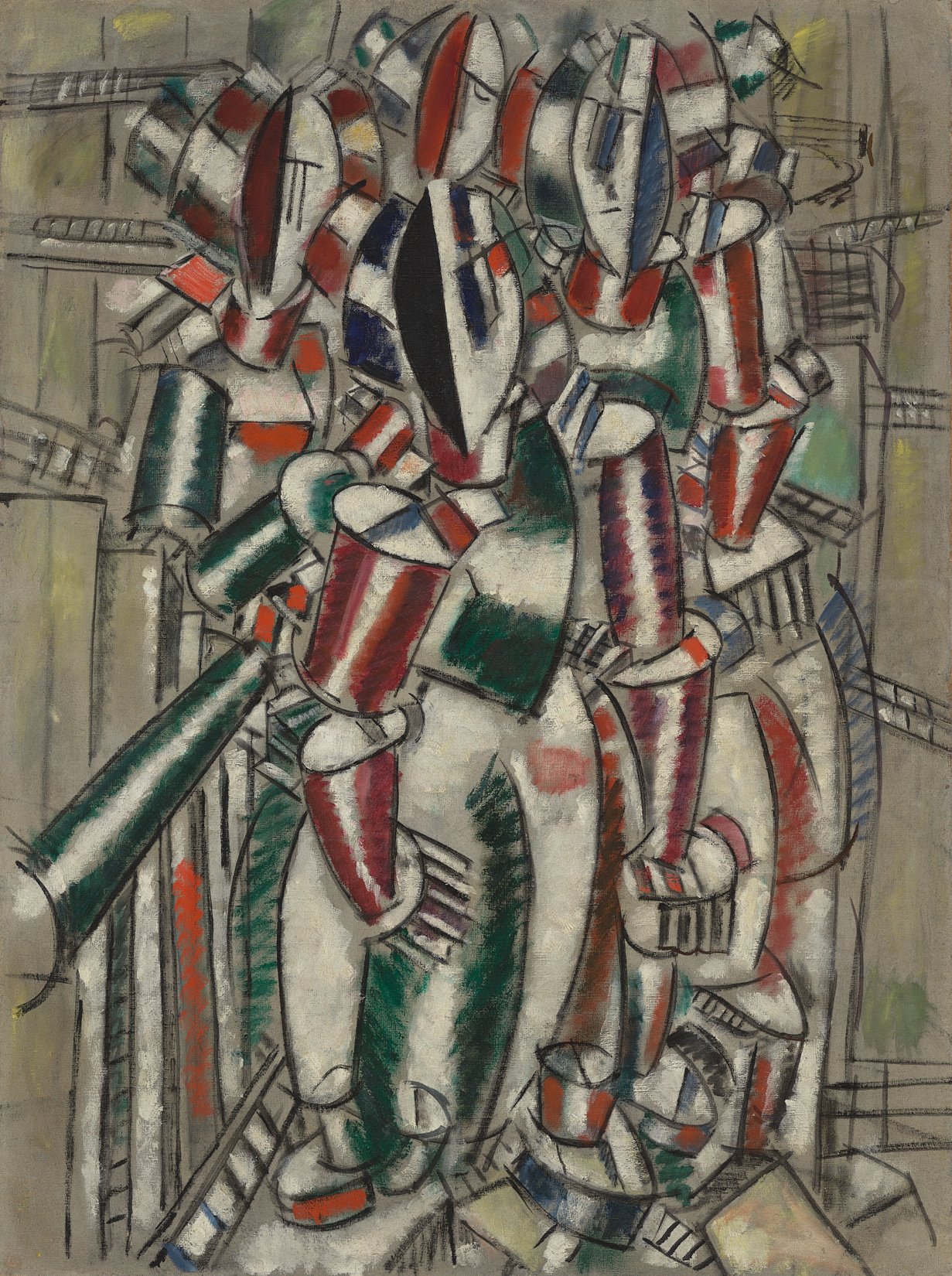Fernand Léger
The Balcony, 1914

Fernand Léger
The Balcony, 1914
Kunst Museum Winterthur, Legat Dr. Emil und Clara Friedrich-Jezler, 1973
Foto: SIK-ISEA, Zürich (Martin Stollenwerk)
Fernand Léger was not a painter of finely nuanced colour tones like Robert Delaunay, and he also wasn’t a strict Cubist like Braque and Picasso. Léger was a painter of expressive contrasts: colour, line and form come into direct conflict in his pictures. Léger sought the elementary, which served him as a framework for his painting.
Le balcon, painted a few months before the outbreak of the First World War, shows a group of figures. Léger has drawn them with scant black dashes. Their forms are filled in a fleeting style with red and green. White was a colour Léger used for the distinct emphasis of plasticity. The figures have almond-shaped heads without faces, they are indistinguishable. Their limbs are tube shaped, and are constructed in the same way as the balcony railing to the left in the foreground.
There is a suggestion of houses and roofs in the background. The figures are obviously standing above the hustle and bustle of the town and appear to be bursting out of the confines of the picture and pushing forwards towards us. To evoke this movement Léger staggered the figures closely one behind another. He had become familiar with this portrayal of the moving mass in the pictures of Italian futurism.
Both the Futurists and Léger were fascinated by the rapidly changing technological world. Léger sought a form of art, "that was as rich as the greatest epochs of the past" and with that, as he said: "with the same tendency towards grand dimensions and the same collectively borne endeavour."


